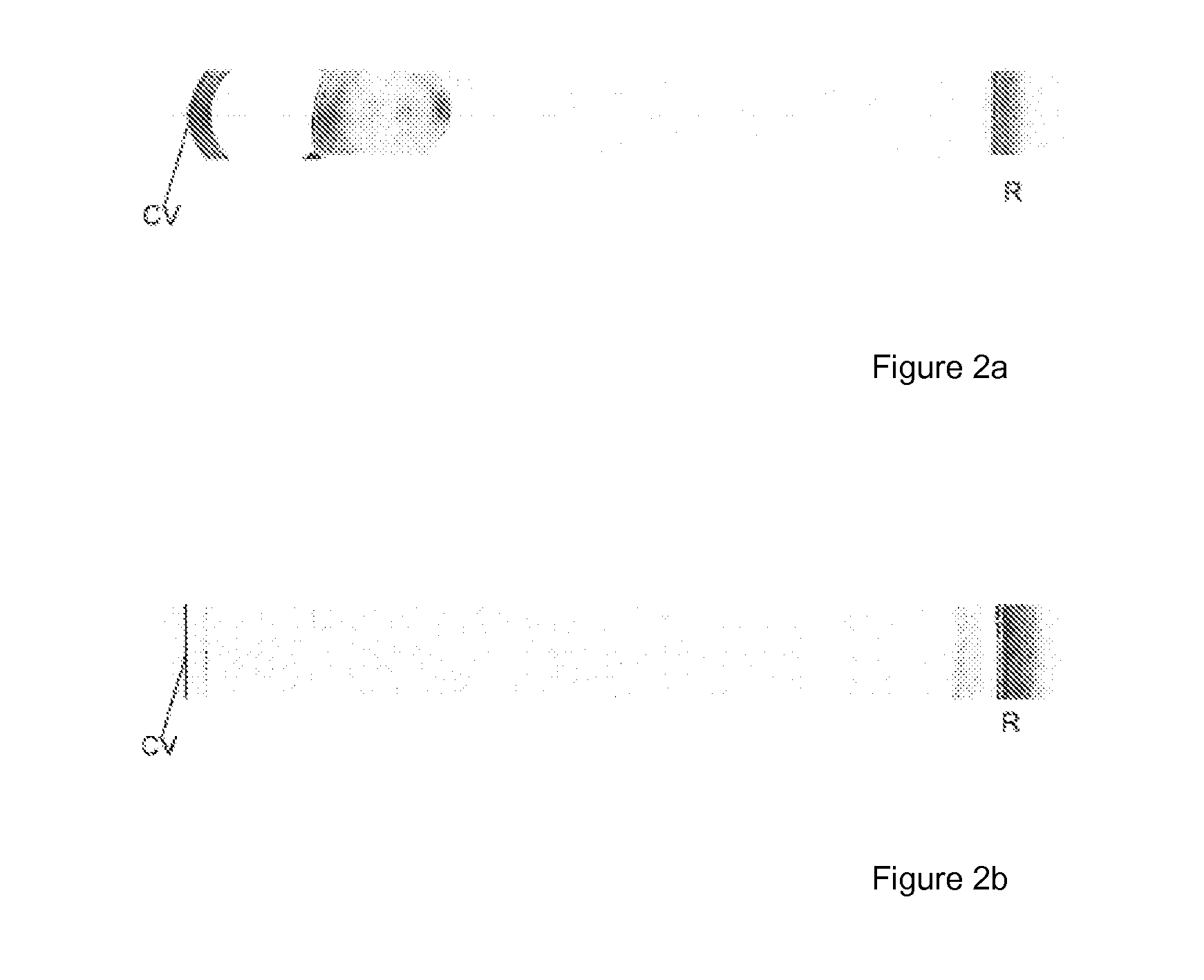Although Scheimpflug, PCI (
partial coherence interference) and
topography systems or combined instruments of same measure some of the aforementioned variables, these combinations cannot measure all parameters of the eye.
In particular, it is not possible to measure the lens rear side and the
retina, or the respective profile of these areas, since these systems, even in a combined
system, are restricted to measuring the anterior chamber and the axial one-dimensional length of the eye.
However, since the OCT can also detect the anterior chamber, the
gain from the Scheimpflug anterior chamber measurement is low compared to the additional costs.
Compared to the
topography / OCT combined systems, pure OCT systems are disadvantageous in that measuring the
topography of the
cornea by means of conventional topometers (in particular Placido systems) is substantially more accurate than the measurements of the OCT systems which are influenced by movement artifacts.
Although said OCT systems can reduce these movement artifacts by faster measurements or by measurements which are registered to the eye, this is only possible with significant outlay and not readily possible in a reliable enough manner
However, the described device exhibits some significant disadvantages, which reduce the reliability of the measurement values.
Although Placido topography has a
very high resolution, it is less reproducible in terms of reconstructing the surface when compared to keratometer measurements.
This is due, firstly, to the assumptions made during the reconstruction of the topography in order to achieve the
high resolution and / or in the lacking telecentricity / insufficient focusability of many topography systems compared to keratometers, and so positioning errors of the measurement instrument in relation to the patient become relevant during the topography measurement.
Furthermore, Placido topographs do not allow so-called Skrew rays to be taken into account, which are always generated in the case of the Placido ring illumination when the cornea is curved not only in a
central plane through the
corneal vertex but also in a plane perpendicular thereto, i.e. if it has azimuthal curvature.
As a result of not taking this into account, the
corneal surface is not reproduced correctly.
Thus, overall, a Placido topograph does not reproduce the
radius or, in general, the front side of the cornea reliably enough as required for the IOL calculation.
Furthermore, time-domain OCT systems are too slow and competitively priced
spectrometer-based systems do not have the axial resolution and / or have a too small axial scanning or detection depth such that the eye length does not occur with the resolution required for the IOL calculation or such that there are only partial depth measurements.
However, whole-eye
biometrics, i.e. establishing the areas of the whole eye optically relevant to the visual faculty of the eye in terms of their position and their profile in the eye, are, in principle, possible in both cases by separate measurement of the anterior and posterior chamber and subsequent synthesis of the data, but the registration of the images to one another is often unreliable due to lack of a suitable common
reference variable in the segment images.
Therefore, the Placido time-domain OCT
system does not allow all
biometric data to be obtained in a sufficiently reliable and simple manner for the IOL calculation.
This
system also allows important biometric variables of the
biometrics of the eye to be determined However, the described device also exhibits some significant disadvantages, which reduce the reliability of the measurement values or leaves open important points which are relevant to whole-eye
biometrics:
Furthermore, this does not solve the problem of assigning the topography measured by the keratometer to the spatial data from the OCT data, nor does it ensure that the OCT measurements are taken particularly quickly in order to compensate for the
eye movement during the measurement.
 Login to View More
Login to View More  Login to View More
Login to View More 


